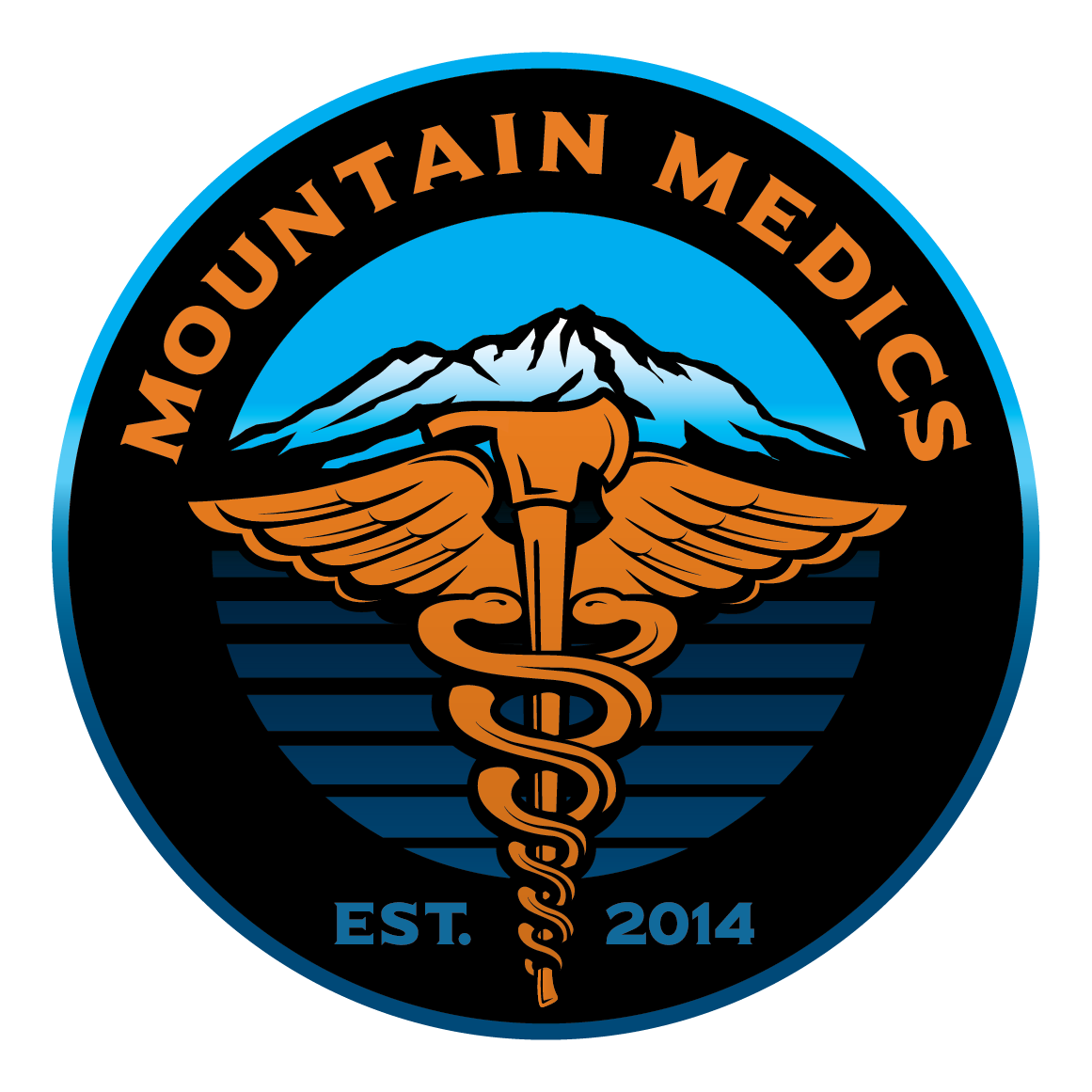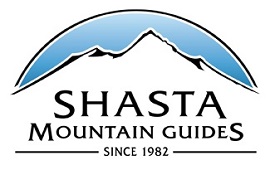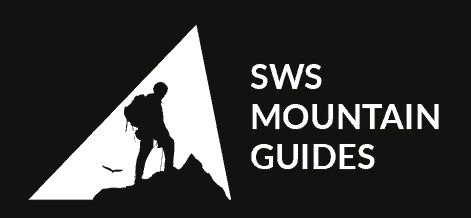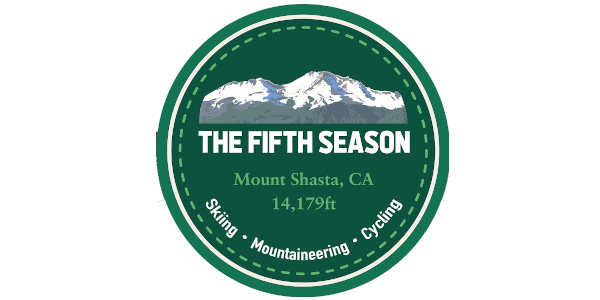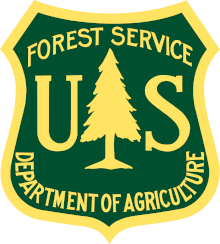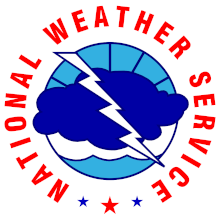Attention climbers... things are about to change in a big way, winter is coming! The first sign of this will be Friday (10/21) with increasing cloud cover, which we havn't seen in weeks. Temperatures will cool off 5-15 degrees cooler than this week, as well a significant uptick in westerly winds. Precipitation is likely Friday night into Saturday morning. While not a whopper of a storm, conditions in general will remain inclement with wind, clouds and rain. Freezing levels should lower throughout the weekend from ~10,000 feet Friday to ~7,000 feet Saturday morning. By Sunday, freezing levels will hover near ~4,000 feet. Overall, a progressive pattern is taking shape and one can expect winter-like weather on Mt. Shasta for the foreseeable future.
Please note that the gate at Bunny Flat will CLOSE for the season on Monday, October 24th, 2022. This includes Panther Meadows Campground. One may still walk up past the gate.
Rangers will also begin to winterize all other trailheads around the mountain. As of this update, trailheads remain open. We will keep you posted!
Please read all of the information below to learn about current conditions, how to climb Mount Shasta, wilderness and climbing regulations, and mountain safety tips. Climbers should understand rescue is neither automatic nor instant. Even rescues that seem straightforward involve planning, effort and risk.
If traveling above 10,000' you need to purchase a summit pass, even if you don't plan to summit. These are available for self-issue at all trailheads and the Mt. Shasta or McCloud ranger stations. Annual summit passes are available to purchase at The Fifth Season gear shop in Mt Shasta City during business hours.
Climber safety and mountain sanitation are two of our top management priorities. Please do your part to keep the mountain clean and pack out all waste. It is REQUIRED to pack out your human waste on Mt. Shasta. Yep, if rangers catch you pooping without a wag bag, a citation can be issued. FREE wag bags are available at all open trailheads. Please help keep Bunny Flat clean. It is one of the busiest places on the Forest. Camping is allowed in the parking lot or just below in the dispersed camping area. It is primitive camping, no water/other services available, except bathrooms. The camping stay limit is 7 consecutive days, and no more than 30 days total in the calendar year. Pack out your trash.
The gate past Bunny Flat is OPEN (will close 10-24-22) to Panther Meadows and the Old Ski Bowl. All wilderness trailheads accessing Mount Shasta are also OPEN (will be closed soon).
Check our recent observations for photos and read the full report for current mountain conditions....
Be Prepared!!
Our goal is to ensure you have a positive wilderness experience and come home in one piece! So,
- BE PREPARED
- DO YOUR RESEARCH
- ALWAYS WEAR A HELMET
- KNOW HOW TO USE YOUR ICE AXE & CRAMPONS.
- CARRY PROPER NAVIGATION TOOLS AND KNOW HOW TO USE THEM
- REMEMBER, YOU ARE RESPONSIBLE FOR YOUR OWN SAFETY.
Accidents and Hazards
Many incidents occur on the mountain every season. The most common accidents include rockfall injuries, lost climbers, and slips and falls in steep terrain. Most accidents can be prevented with proper planning and preparation.
- Do not climb into a whiteout. Always carry a map and compass and/or GPS device and route plan ahead of time.
- Keep your group together. If you split up, have a solid plan and make sure everyone has proper equipment and knows the way.
- Do not glissade with crampons on. If you choose to glissade, take OFF your crampons and make sure the snow is soft.
- Know how to properly self-arrest with your ice axe. A slip and fall on the upper mountain can be fatal.
- Wear a helmet and watch out for rockfall. Climbers get hit every year.
With the right knowledge, skill, equipment, and decision-making, all of these accidents can be easily prevented. Please, wear a helmet, and know how to use your ice axe and crampons any time of the year.
There is always the potential for thunderstorm activity during the summer months to shroud the mountain in clouds, limiting visibility. Climbers becoming disoriented on the upper mountain in whiteout conditions and subsequently descending the wrong route is not uncommon. These kinds of scenarios have resulted in many searches over the years. It should go without saying, but we will say it as a solid reminder: Check the weather before you go and more importantly, monitor the weather as you climb. DO NOT CLIMB INTO A WHITEOUT! Being caught on the mountain in any type of weather can compromise life and limb.
Understand that if something goes wrong or a member of your climbing party gets injured, you need to be prepared to self-rescue. If you have an emergency on the mountain, call 911. Be prepared to provide your location and the nature of the injury.
Many hazards exist in mountain terrain. Some of these include:
- Ice and rockfall
- Altitude
- Extreme weather
- Avalanches
Icefall and rockfall are possible year-round. It's a simple equation: as snow melts, rockfall increases. If rime ice is seen plastered to exposed rocks above, it will eventually flake off and fall onto climbers. Wear a helmet and keep your eyes upslope as you climb. Pay attention to other climbers: rockfall is often caused by climbers resting in melted out areas and accidentally dislodging rocks onto slopes and climbers below. Be careful not to kick rocks down onto others.
At the height of 14,179 feet, Mount Shasta is a high altitude peak. It is common for climbers to experience acute mountain sickness (AMS) with signs and symptoms of nausea, headache, and lightheadedness. Despite being a common condition, AMS should not be taken lightly. It can quickly develop into a much more serious and potentially deadly pulmonary or cerebral edema. Stop and take a break. If symptoms do not improve, your only choice is to descend!
Mt Shasta is a 14, 179-foot volcano with steep slopes, avalanches, glaciers, rockfall, altitude, and extreme weather. Some may feel like Mt Shasta is "safe" due to its proximity to Interstate 5 and its "easy" climbing objective connotation. This is false. One should still expect cold, winter-like conditions at any time of year. Have the appropriate gear AND skill level. Mountaineering is dangerous, and climbers must constantly evaluate the terrain, weather, and many other factors to have a safe trip. One should also not expect immediate rescue. Many factors can prolong rescues. Thus, it is necessary, no matter what mountain of the world, that you be prepared.
Mountain Weather
Check the WEATHER FORECAST before coming up onto Mt. Shasta! Our site's main menu hosts numerous resources on the weather. Researching the mountain weather should be an important part of your trip planning.
Clouds and Precipitation: While you may encounter fair weather at lower elevations, cloud caps can form up high. Never climb into a whiteout, as many climbers have become lost or died in similar conditions. Many routes from all aspects of Mt. Shasta converge on the upper mountain (>12,500 feet). During limited visibility conditions, climbers have descended the wrong side of the mountain. Keep an eye on the sky as you climb, turning around if clouds begin to build on or near the mountain.
Lightning: Mt. Shasta is a 14,000-foot lightning rod and is frequently hit by lightning (usually in summer and fall months), so don't push your luck with building thunderheads.
Wind: Winds can reach over 100 mph at tree line (8,000 ft) and much higher in the alpine region. Winds of 40 mph can knock you off balance. Winds of 60-70 mph can force you to crawl. Hurricane strength winds (>74 mph) can make it nearly impossible to stand and will destroy well-anchored tents. The strongest winds occur with big pressure and temperature gradients in the atmosphere and tend to occur in front of and behind storms. The lowest winds occur when the center of high pressure is over the Mt Shasta area. Take this seriously as the wind has resulted in searches, injuries, and fatalities.
Tips & Notes
Climb early and descend early. This limits exposure to inclement weather (afternoon buildup of clouds is common), allows plenty of time to descend before dark and allows a rescue effort to ensue before dark if one gets injured or lost.
Get an alpine start (2-5 am) and have a turnaround time of 12 to 1 pm. Proper equipment, clothing, and training are a must. Helmets are always recommended and expect rock and ice to fall at all times.
Bring extra warm gear (like a down jacket, balaclava, and extra gloves) in all seasons as climbers often develop superficial frostbite during strong winds. The wind chill temperature near the summit in winter and spring can be well below zero.
Anchor your tent well wherever you camp. Tents can and do blow away frequently. Do not plan to camp above treeline if you do not have anchor lines for your tent.
Solo climbing is not recommended. Traveling with an experienced group is a good idea, and remember - do not split up the group!
The routes on the north and east sides are not recommended for unguided novices; glacier travel and route finding skills are prerequisites.
Mountain Rescue
Do not expect to be rescued. Rather, prevent rescues from happening in the first place, and be prepared to handle rescues within your climbing party should something happen. Nature sets its own terms, and YOU must judge how much risk you are willing to accept.
When to Climb
The BEST time to climb Mt. Shasta is usually from May to mid-July on the south and west sides of the mountain when summer days are longer and the weather is generally stable. However, in dry years, the thin snowpack creates the best climbing conditions in April, May and early June. When the snow melts, you are left with 7,000 feet of scree, talus, and boulders. In heavy snow years, the climbing season extends to August or September. There is NO trail to the summit. Climbing is much safer and more fun on consolidated snow.
A winter climb of Mt. Shasta is possible. Still, it is more difficult and dangerous: extreme weather, short days, avalanches, falling ice and potential post-holing increase the difficulty and danger on all routes. If you choose to travel in the backcountry during the winter and spring, you need to have the proper equipment and training to stay safe. An avalanche beacon, shovel, and probe and the ability to identify avalanche terrain and snow stability are essential. A climb of Shasta should not be taken lightly.
Every year, many climbers become lost, injured or killed while attempting Mt. Shasta. Many of these accidents could have been prevented with a little bit of pre-planning and training. YOU need to come prepared.
What to Bring
- MANDATORY: wilderness permit, summit pass, human waste pack-out bags. Available for self-issue at all open trailheads.
- THE TEN ESSENTIALS: map and compass, sunglasses and sunscreen, extra food and water, extra clothing, headlamp/flashlight, first aid kit, matches/lighter, stove, knife/multi-tool, bivy sack
- HELMET, ICE-AXE, & CRAMPONS
- AVALANCHE BEACON, AVALANCHE PROBE, SHOVEL
Wilderness permits, summit passes, and pack-out bags are currently available at all trailheads, the Mt. Shasta and McCloud Ranger Stations and The Fifth Season outdoor store in Mount Shasta City. All trailheads are currently open. Annual passes ($30) are available at The Fifth Season store as well as the Mount Shasta/McCloud Ranger Stations. The Mount Shasta and McCloud Ranger Stations are usually open Monday through Friday from 8 to 4:30 PM. Check our climbing regulations for more details.
Using common sense and carrying the TEN essentials keep you and your party out of search and rescue statistics. Wear a helmet, and know how to use your ice axe and crampons. Be prepared and pay attention. The mountain has extreme weather changes.
Winter and Spring months usually see periods of heightened avalanche danger, though this danger could exist in the summer months under the right circumstances. Research the weather and avalanche danger while planning your trip. Have your climbing party bring avalanche beacons, probes, and shovels armed with proficient skills in their use. Know how to identify avalanche terrain and evaluate snowpack stability.
Shasta Alpine Hut
The stone cabin at treeline on the Avalanche Gulch climbing route is open year-round and all are welcome. However, one cannot sleep inside the cabin, except in emergencies. The composting toilet is open for the season and drinking water is available at the spring. Caretakers are present five days a week for the climbing/hiking season. If you plan on camping, there are two dozen dispersed sites on the property, a nominal $3/bivy and $5/tent fee is asked. There is a fee deposit tube inside the cabin. This fragile area gets a lot of use. Please practice Leave-No-Trace principles. Lastly, the property owner, the Sierra Club Foundation, manages its property under the Mt. Shasta Wilderness rules – dogs, horses, and other domestic animals are not allowed. No drones. Thanks!
Dogs
DOGS, AND OTHER DOMESTIC ANIMALS, ARE NOT ALLOWED IN THE MT. SHASTA WILDERNESS OR WITHIN THE SIERRA CLUB FOUNDATION PROPERTY BOUNDARIES (Shasta Alpine Hut).
10.20.22 - Winter is on the way and weather conditions are going to change drastically this weekend. Rangers are beginning to winterize trailheads. We never want to be a buzz kill, but will say it: climbing the mountain this time of year is the worst time of year to climb.... Mt Shasta is completely melted out and a chossy, loose rock pile. Cover all those loose (big and little) rocks with some snow and ice, add in bone-chilling wind and poor visibility....sound fun? It's not, and it's dangerous. If you want to climb the mountain, we suggest waiting until there is ample snow cover this winter (wax those skiis up), or wait until next spring when it's primo corn harvest time!
Please note that road work has started this week on the Brewer Creek Trailhead road (42N02 South going to 42N10). The contractors have “Road Work Ahead” signs up at the intersection of 42N02 South & 41N19X and at the intersection of 42N02 north & 42N10. Access to the trail maybe limited and road closures will happen at times due to replacing of multiple culverts along the roadway to the trailhead. We will relay information as it evolves.
The south side climbing routes are not recommended. Snow coverage is inadequate for a safe and enjoyable ascent. Day hikes up to ~10,000 feet are reasonable but climbing further into steep, rocky terrain is not. The Clear Creek route is the route of choice for those seeking the lowest risk. The Hotlum-Bolam Ridge on the north side is still holding some patches of snow and ice, but is not for beginners, especially in these conditions. The Hotlum-Wintun Ridge route via Brewer Creek trailhead is also still in decent shape but is also not recommended for beginners. Again, watch for rockfall on all these routes except Clear Creek. It's a simple rule of thumb: as the snow melts and rock becomes exposed, chances of rockfall increase in steep terrain.
The Clear Creek route is climbable throughout the summer. The summit plateau is still holding snow in places but the climbing route itself is now entirely snow-free. The summit pinnacle is also snow-free. We think that a set of trekking poles will serve climbers well on this route. There is no maintained trail above the springs on the Clear Creek route. Do your best to stay on what looks like the most well-used path up the scree fields to prevent further erosion on the climbing route.
Mount Shasta, despite being 15 minutes off the interstate, is a big mountain with real hazards. Climbing the mountain is not just "backpacking" and there is no established trail to the top. Route finding and over snow travel in steep terrain is an essential skill for a safe climb. An ice axe, 12-point crampons, helmet and self-arrest skills are mandatory. In some icy areas, even the best self-arrest technique may not work.
CURRENT WEATHER PATTERN: Winter is on the way! Weather conditions are going to change drastically this weekend. Our weather tab has several great links for weather, including the rec forecast and discussion.
MOUNTAIN HAZARDS: Be heads up for falling rock and icy conditions if on a glacier route. It may be impossible to self-arrest on bare glacial ice. Rockfall will be a bigger issue going forward.
WATER: Water is available at the Shasta Alpine Hut (Horse Camp) and the restrooms are open. A caretaker is on duty. Water is also available at the Clear Creek springs and Hotlum-Bolam camp at 9,700 feet (stream). One must melt snow for water anywhere else on the mountain, or carry it in if there isn't adequate snow on your route of choice. Don't underestimate how much water you'll need to make an ascent of Mount Shasta, especially in hot conditions.
Please read all the information below to educate yourself on general information about what it takes to safely climb Mt Shasta. If you have further questions, don't hesitate to give us a call. We are not always in the office, but will respond as soon as we can: 530-926-9614 or email nicklaus.meyers@usda.gov.











